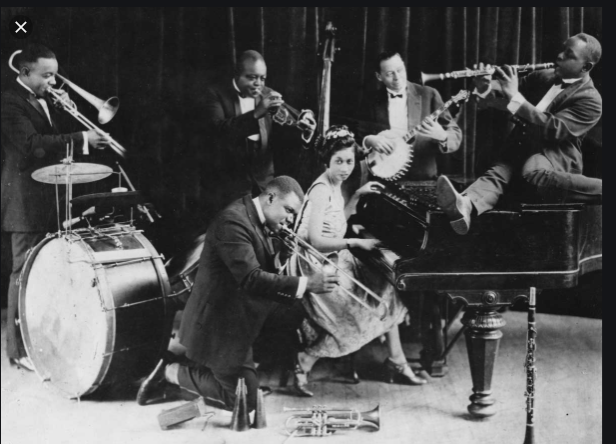
King Oliver and his Creole Jazz Band, Chicago, 1923 © Gilles Petard/Redferns/Getty Images.
Cataloged as the Devil's music, jazz broke the barriers, musically and socially. Jazz was famous for being an improvised way of music, instead of the traditional structure - performers over composers. Initially jazz was a type of music only played in Black neighborhoods and establishments.

